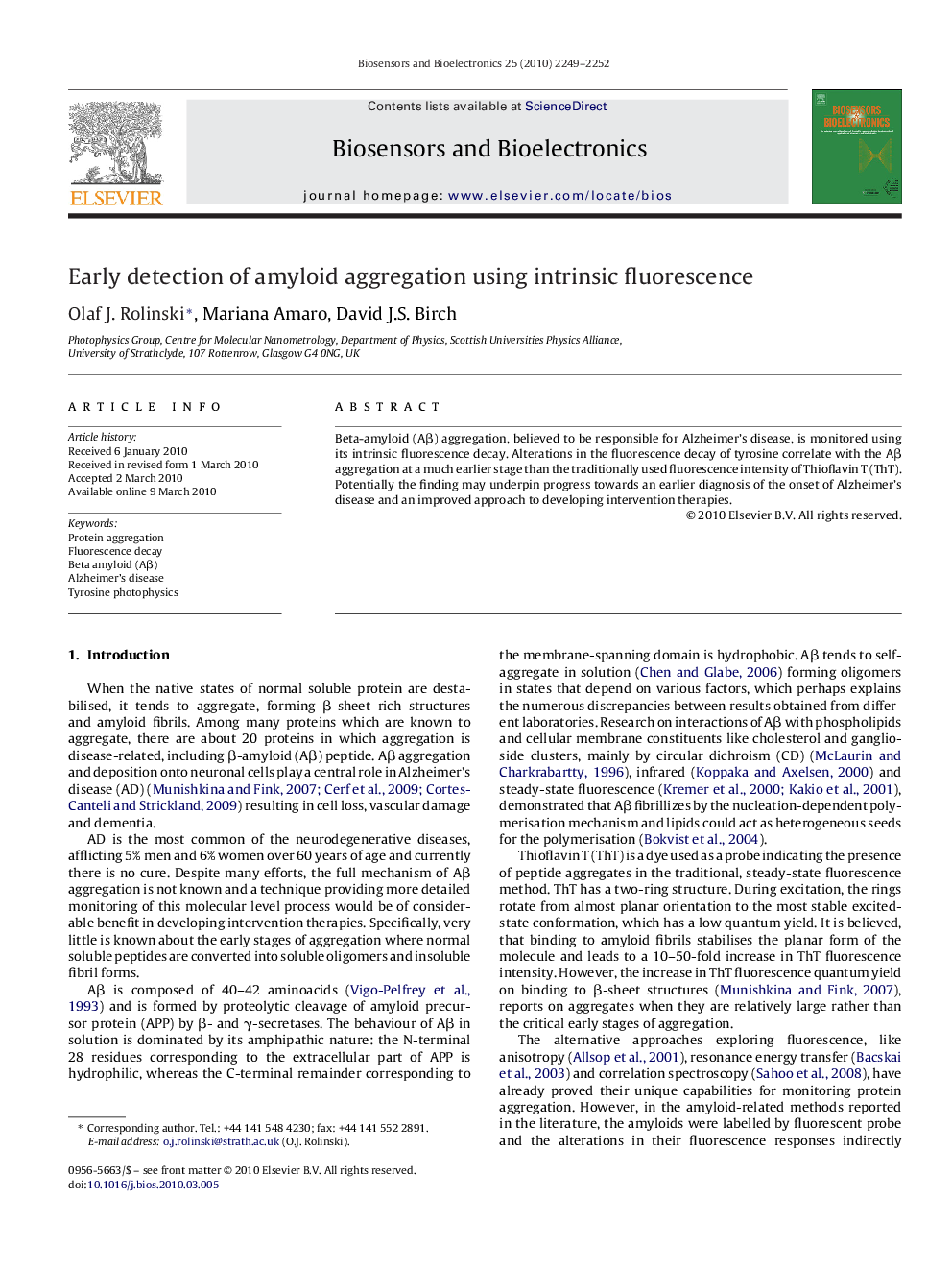| Article ID | Journal | Published Year | Pages | File Type |
|---|---|---|---|---|
| 868321 | Biosensors and Bioelectronics | 2010 | 4 Pages |
Abstract
Beta-amyloid (Aβ) aggregation, believed to be responsible for Alzheimer's disease, is monitored using its intrinsic fluorescence decay. Alterations in the fluorescence decay of tyrosine correlate with the Aβ aggregation at a much earlier stage than the traditionally used fluorescence intensity of Thioflavin T (ThT). Potentially the finding may underpin progress towards an earlier diagnosis of the onset of Alzheimer's disease and an improved approach to developing intervention therapies.
Related Topics
Physical Sciences and Engineering
Chemistry
Analytical Chemistry
Authors
Olaf J. Rolinski, Mariana Amaro, David J.S. Birch,
